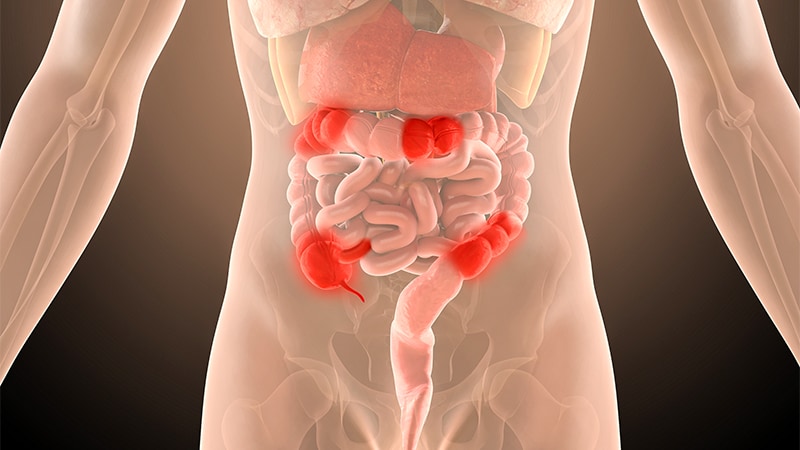TOPLINE:
In paediatric-onset Crohn’s disease (CD), the colonic location of the disease was associated with higher risks for perianal disease and extraintestinal manifestations (EIMs), whereas the ileal location carried a threefold higher risk for surgery.
METHODOLOGY:
- A population-based registry study was conducted to compare the clinical presentation at diagnosis and the short- and long-term outcomes of paediatric-onset ileal CD, colonic CD, and ulcerative colitis (UC).
- Children younger than 17 years from Northern France with a diagnosis of ileal CD (n = 215; median age, 15 years; 53.5% boys) or colonic CD (n = 234; median age, 13.7 years; 53.4% boys) were enrolled between 1988 and 2011. Additionally, 337 children with UC (median age, 14 years; 42.7% boys) were enrolled during the same period. They were followed up for a median of 8.4, 9.2, and 7.2 years, respectively.
- Data on EIMs, comorbidities, radiologic and endoscopic findings, medications administered, hospitalisations, and surgical interventions were collected, and outcomes were compared between groups.
TAKEAWAY:
- Children with colonic CD had a higher risk for disease extension, with 5-year and 10-year cumulative risks of 37% (95% CI, 30%-43%) and 52% (95% CI, 44%-59%), respectively, compared with 14% (95% CI, 9%-20%) and 24% (95% CI, 16%-30%) for those with ileal CD (P < .0001).
- Both children with colonic CD and those with ileal CD had a higher risk for EIMs than children with UC (hazard ratio [HR], 2.3 and 1.9, respectively; P < .0001).
- Children with colonic CD had a higher risk for perianal disease (HR, 2.1; P = .003) and a lower risk for luminal fistula (HR, 0.4; P = .0004) than those with ileal CD. They also had a higher 10-year risk for exposure to steroids, immunomodulators, and anti-TNF than those with ileal CD or UC.
- Children with ileal CD had a threefold greater 10-year risk for intestinal resection (HR, 3.7; 95% CI, 2.6-5.2) than children with colonic CD or UC, whose 10-year surgical risks were similar (18% for colonic CD and 17% for UC).
IN PRACTICE:
“Overall, our study supports the need for location-specific treatment algorithms in CD, aligning therapeutic choices with distinct risk profiles and disease behaviours,” the authors wrote.
SOURCE:
This study was led by Mathurin Fumery, MD, PhD, Amiens University Hospital and PeriTox, Université de Picardie Jules Verne, Amiens, France. It was published online on June 25, 2025, in Inflammatory Bowel Diseases.
LIMITATIONS:
The data were collected retrospectively; however, each visit was documented and reviewed by two expert gastroenterologists. Follow-up concluded approximately 10 years ago; therefore, the impact of earlier and broader biologic therapy on disease progression by anatomical site remains unclear.
DISCLOSURES:
The registry received financial support from the François Aupetit Association and the Lille, Amiens, and Rouen University Hospitals. This study was supported by the Programme Hospitalier de Recherche Clinique Interrégional and the Conseil Régional du Nord- Pas-de-Calais. Some authors declared receiving lecture, consulting, or personal fees from various pharmaceutical companies.
This article was created using several editorial tools, including AI, as part of the process. Human editors reviewed this content before publication.
Source link : https://www.medscape.com/viewarticle/disease-location-affects-outcomes-paediatric-crohns-2025a1000her?src=rss
Author :
Publish date : 2025-07-02 12:00:00
Copyright for syndicated content belongs to the linked Source.
